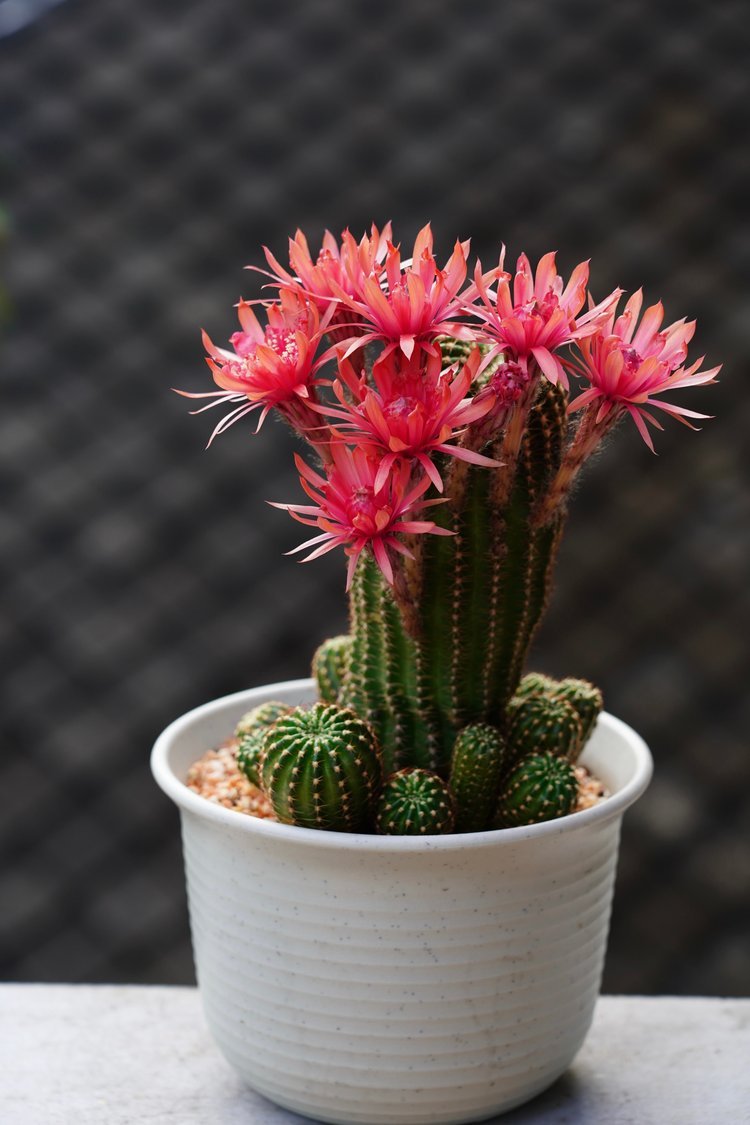The Ultimate Guide to Cactus Succulents - Care Tips, Types, and More in Australia!
Are you looking to add unique, low-maintenance plants to your Australian home or garden? 🌵 Cactus are the perfect choice! These resilient plants come in a variety of shapes, sizes, and colors, making them a versatile addition to any collection. In this guide, we'll cover everything you need to know about cactus succulents, from care tips to popular types, and more.
WHAT ARE CACTUS SUCCULENTS ?
Cacti commonly referred to as cactus "succulents" are the plants that contain water in them and they grow well when there is little rainfall. They belong to the plant group that is characterized by leaves, stems or roots in which water is stored. This feature makes them suitable for the Australian weather, particularly dry and sunny as well as appropriate ways of watering plants and flowers. Regardless of whether you are in Melbourne, Sydney, or Perth these plants are easy going and they can grow in any conditions.








Cactus Care Tips for Australians.
Caring for cactus succulents is relatively easy, but it's important to provide them with the right conditions to thrive. Here are some essential care tips:
Light: Cacti need plenty of sunlight to grow properly. Place them in a sunny spot, such as a south-facing window, where they can receive at least six hours of sunlight per day.
Watering: Cacti are drought-tolerant plants, so they don't need to be watered frequently. Allow the soil to dry out completely between watering’s, and be cautious not to overwater, as this can lead to root rot.
Soil: Use a well-draining cactus or succulent soil mix for planting cacti. This will help prevent water from pooling around the roots, which can cause rot.
Temperature: Cacti prefer warm temperatures and do well in a range of 65-90°F (18-32°C). Protect them from cold drafts and temperatures below 50°F (10°C).
Fertilizing: Feed your cactus succulents with a balanced, water-soluble fertilizer during the growing season (spring and summer) to promote healthy growth.
Popular Types of Cactus in Australia
Saguaro (Carnegiea gigantea): Known for their tall, columnar shape and iconic arms, saguaro cacti are native to the Sonoran Desert in Arizona, California, and Mexico.
Golden Barrel Cactus: (Echinocactus grusonii): This cactus features a round, barrel-like shape and is covered in sharp spines. It's native to Mexico and requires plenty of sunlight to thrive.
Echinopsis Chilensis: Embodies the rugged beauty and adaptability of cacti, making it a cherished species among plant enthusiasts and a symbol of the Chilean landscape where it originates.
Bridgesii Monstrose: The primary appeal of the Bridgesii Monstrose lies in its unique and conversation-starting appearance, making it a popular choice for collectors of unusual plants.
Old Man Cactus: The Old Man Cactus (Cephalocereus senilis) is a distinctive and visually striking species of cactus known for its long, white hairs that cover its surface, resembling the hair of an elderly man, hence its common name.
Why Cactus Succulents Are Perfect for Australian Gardens
Drought tolerance.
Versatility.
Low maintenance.
Regardless whether you live in Sydney and is surrounded by water or stay in Melbourne with moderate climate or have scorching hot summers in Perth cactus succulents would look great in your home.
In Conclusion
Cactus are a fantastic addition to any garden, thanks to their unique shapes, low-maintenance nature, and stunning flowers. By following the care tips outlined in this guide, you can enjoy these beautiful plants in your home or garden for years to come. So why wait? Start your cactus succulent collection today and enjoy the beauty of these fascinating plants!
So why wait? Begin your cactus journey today desert charm to your Australian home or garden! 🌵✨ 🌵




